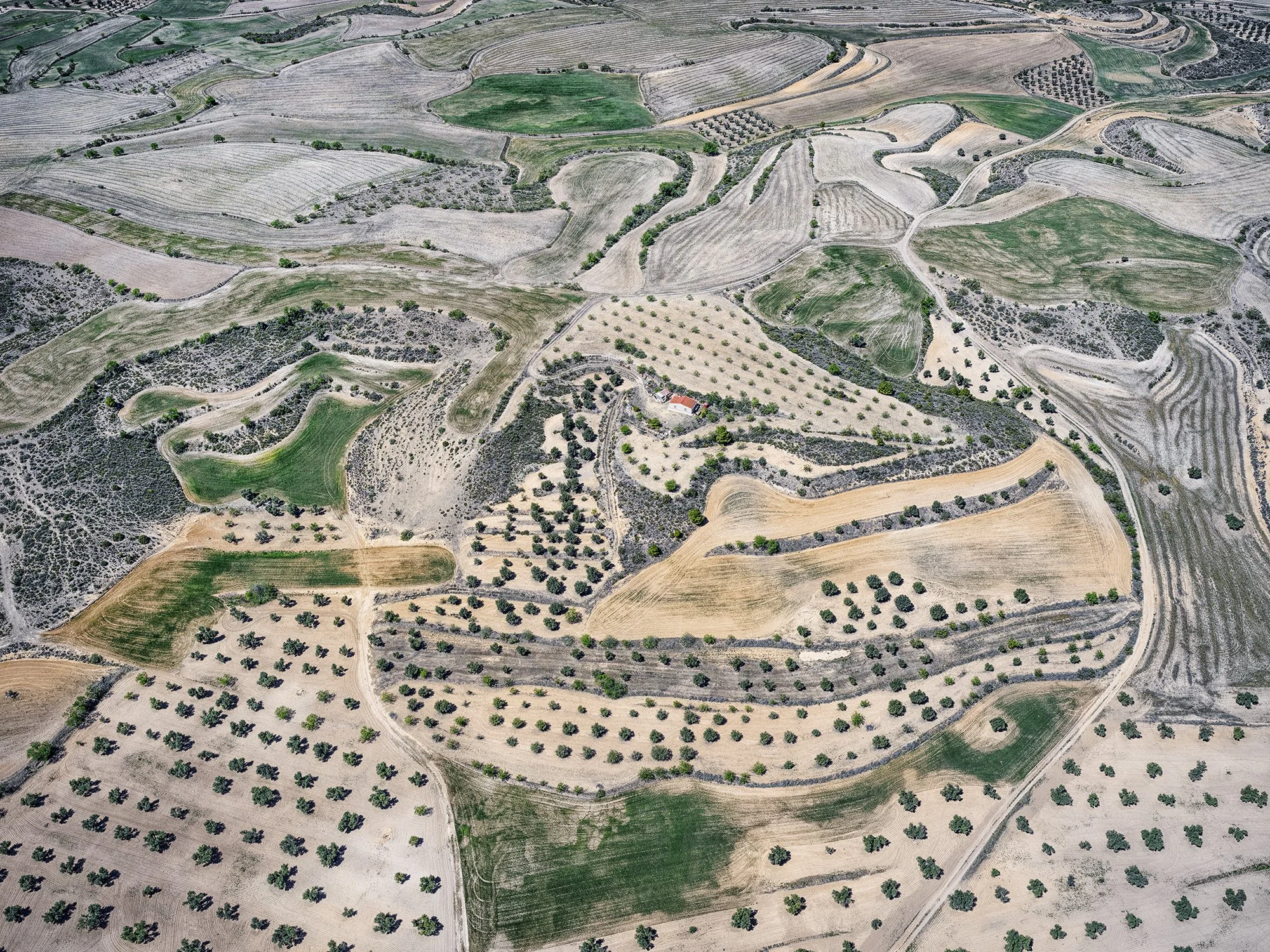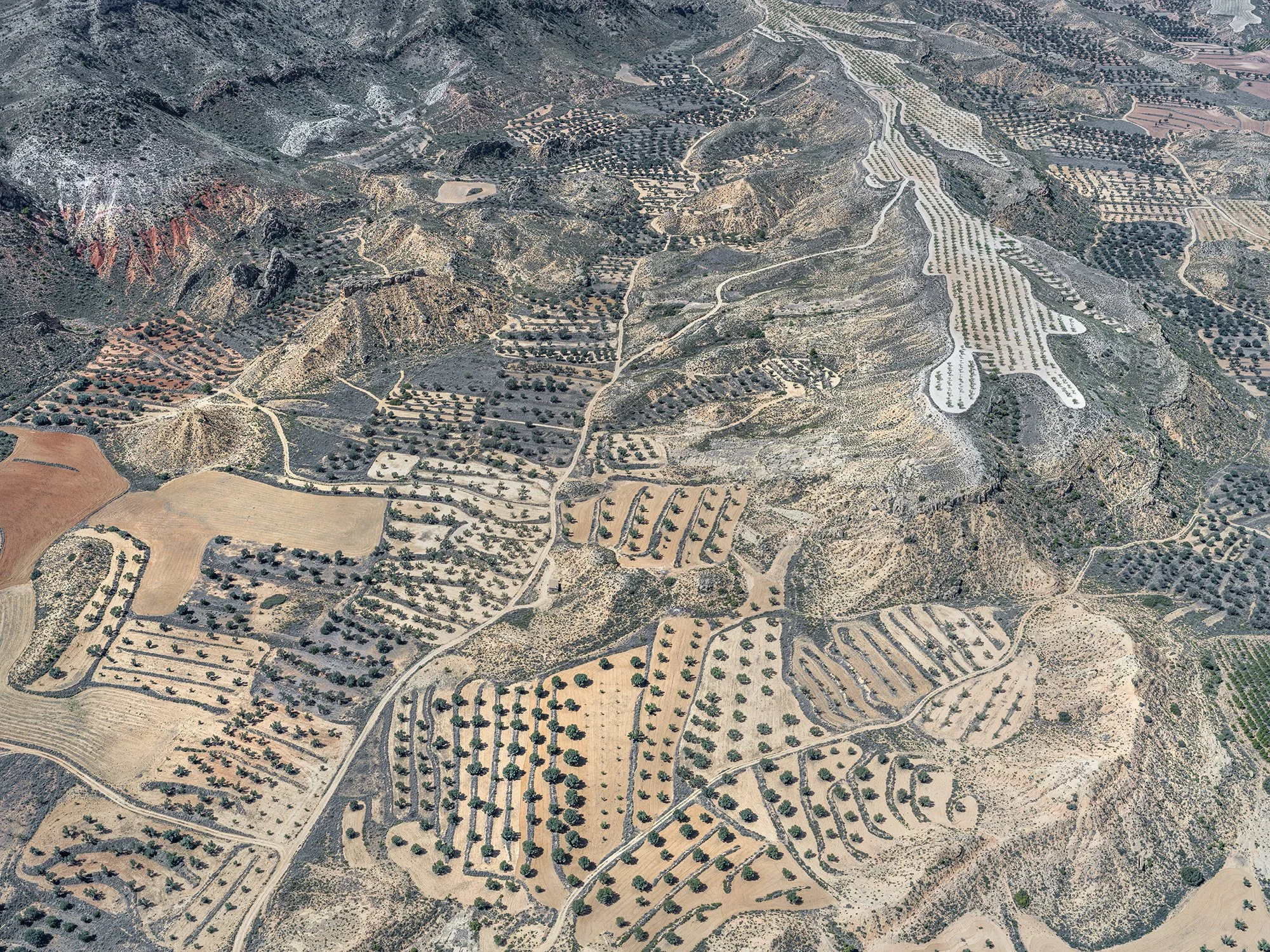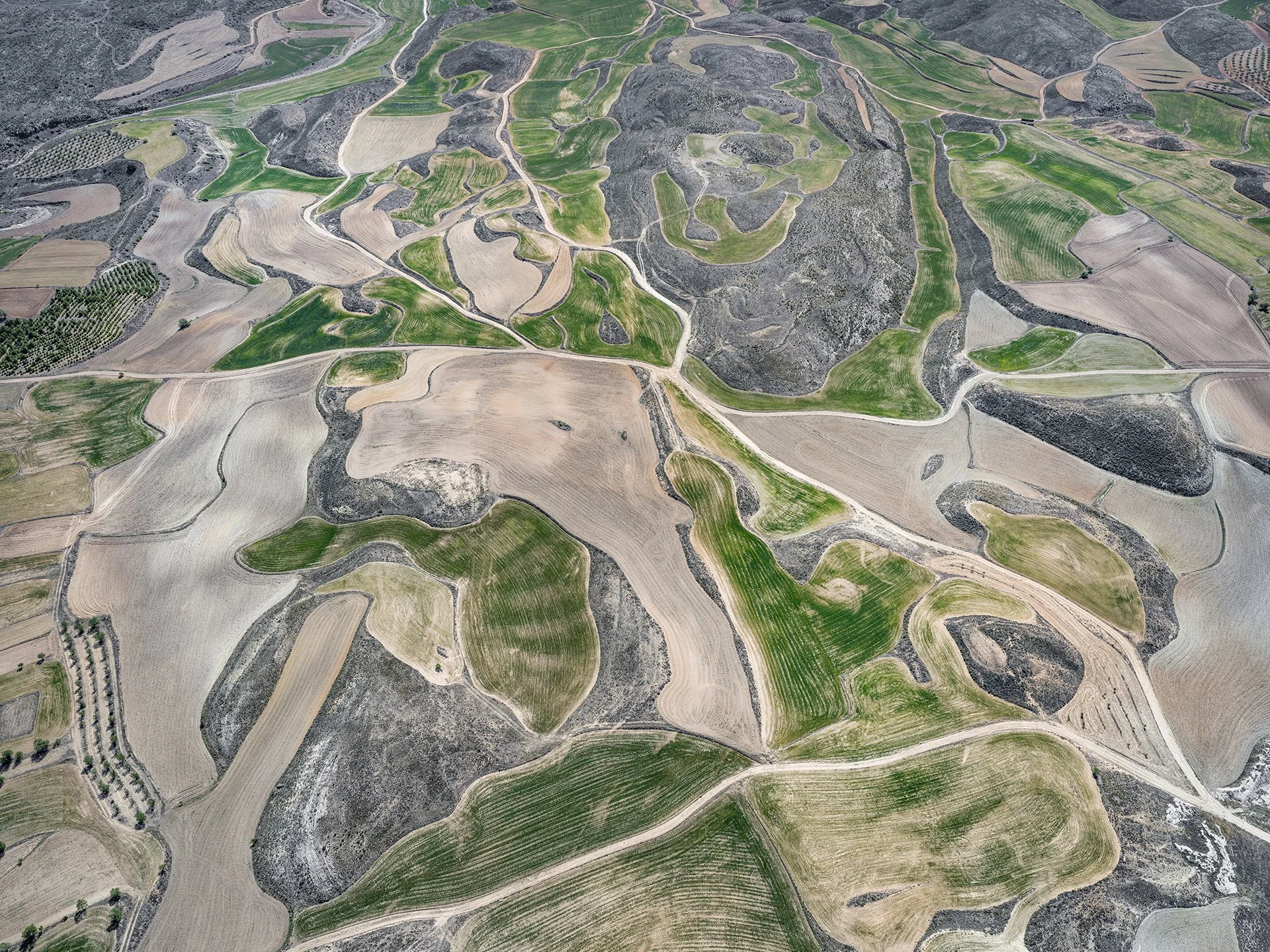MANMADE LAND
Monoculture #1
Ever since man became Homo Sapiens we have manipulated and undulated the world we live in. The big changes came with the development of agriculture some 7000 years ago. The land around the Mediterranean Sea got deforested by man and great erosion problems started as an immediate consequence. The fertile soil was flushed away by rains and left was just bare rock. In Spain there was still soil enough which could be used for farming. The problem here was the lack of water in the dry climate. To use the land in the best way, farmers started to grow the crops during the winter season, this when the precipitation was enough the make the crops grow. They then harvested in the spring before the soil got too dry from the summer heat. In many areas of Spain this way of dryland farming is still practiced. It is a sustainable method, since no irrigation is used. Still the land is more or less completely consumed for farming. Specially in the provinces of Andalusia and Aragon there is almost not a single square meter which is not tamed and undulated by man and used for farming. This has resulted in huge monocultures. The diversity of plants which once grew here is erased and gone forever. From the air this land look both scary and fantastic at the same time. From an artistic point of view it is specially unique. The farm fields have taken on incredible shapes and patterns and you can easily make parallels to expressionistic art. The farmers, of course had no aesthetic intentions when they reshaped the land. The shapes of the fields are just results of the topography and the farming technics.
Another huge human footprint on Mother Earth is the giant mine of Rio Tinto in the Andalusian mountains. It measures some 5x10 km and is just an enormous cavity. The mining started already during the bronze age. Today however, the mine is more than an isolated cavity on the earth's surface. Its growth has consumed not only mountains and valleys but even entire villages, whose populations had to be resettled in specially built towns nearby. Named after the river which flows through the region itself named for the reddish streaks that colour its water. Rio Tinto has become a landscape within a landscape.The unearthed minerals give the soil and waters of the region odd, otherworldly shades of blue, green, yellow, red and brown and it is not unusual to see even bright orange or green rivulets trickling past. The predominant ores, however, are the ferrous ones, which oxidise when they come into contact with the air and colour land and river alike in shades of reddish brown. Spectacular and beautiful colors indeed, but they are nothing but the colors of poison. Due to the leakage from the mines, the water of Rio Tinto is today the most polluted river in the world and its acidity is a scary PH 2 , which is as acidic as it gets in our stomach and equal to acetic acid. In other words not only poisonous, it is also corrosive.
In the helicopter, hanging over these manmade and sometimes completely destroyed landscapes and polluted waters, I found myself completely absorbed by the foot prints we have left behind us. Man´s deeds of creations and destructions hit me like gun shots. Even though the farming is what we consider sustainable, how can we allow the landscape to be completely consumed and leaving no room for other plants than the ones used for farming? How can it be possible for a mining company to destroy such an enormous land area and pollute its water without being stopped? I I don´t have a clue? In both cases, the results are what I observe with my camera from above. Simply non-erasable manmade foot prints.
Arino Mine #1, Spain 2023
Arino Mine #2, Spain 2023
Arino Mine #3, Spain 2023
Arino Mine #4, Spain 2023
Minas de Rio Tinto #1, Spain 2017
Minas de Rio Tinto #3, Spain 2017
Colors of Poison #3, Spain 2017
Colors of Poison #4, Spain 2017
Colors of Poison #5, Spain 2017
Colors of Poison #7, Spain 2017
Colors of Poison #8, Spain 2017
Colors of Poison #10, Spain 2017
Farmland #3, Spain 2017
Farmland #2, Spain 2017
Farmland #1, Spain 2017
Farmland #4, Spain 2017
Farmland #5, Spain 2017
Farmland #6, Spain 2017
Farmland #24, Spain 2022
Field Mosaic #1, Spain 2022
Field Mosaic #2, Spain 2022
Field Mosaic #3, Spain 2022
Field Mosaic #4, Spain 2022
Field Mosaic #5, Spain 2023
Monoculture #2, Spain 2017
Olive Plantations I, Spain 2022
Olive Plantations II, Spain 2022
Olive Plantations III, Spain 2022
Vineyards, La Rioja, Spain 2022
Drought #1, Spain 2023
Drought #2, Spain 2023
Drought #3, Spain 2023
Drought #4, Spain 2023
Drough #5, Spain 2023
Drought #6, Spain 2023
Drought #7, Spain 2023
Drought #8, Spain 2023
Drought #9, Spain 2023
Drought #10, Spain 2023
Drought #11, Spain 2023
Drought #12, Spain 2023
Drought #13, Spain 2023
Drought #14, Spain 2023
Drought #15, Spain 2023
Drought #16, Spain 2023
Drowned Trees, Spain 2017.
Zahara-El Gastor Reservoir, Spain 2017
Farmland #1, Spain 2023
Farmland #2, Spain 2023
Farmland #3, Spain 2023
Farmland #4, Spain 2023
Farmland #5, Spain 2023
Farmland #6, Spain 2023
Farmland #7, Spain 2023
Farmland #8, Spain 2023
Farmland #9, Spain 2023
Farmland #10, spain 2023
Farmland #11, Spain 2023



























































